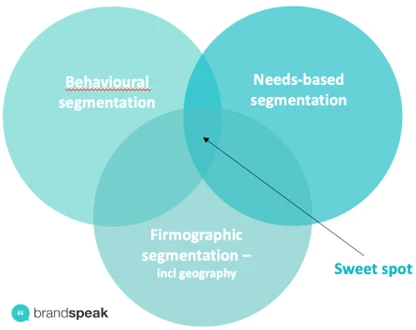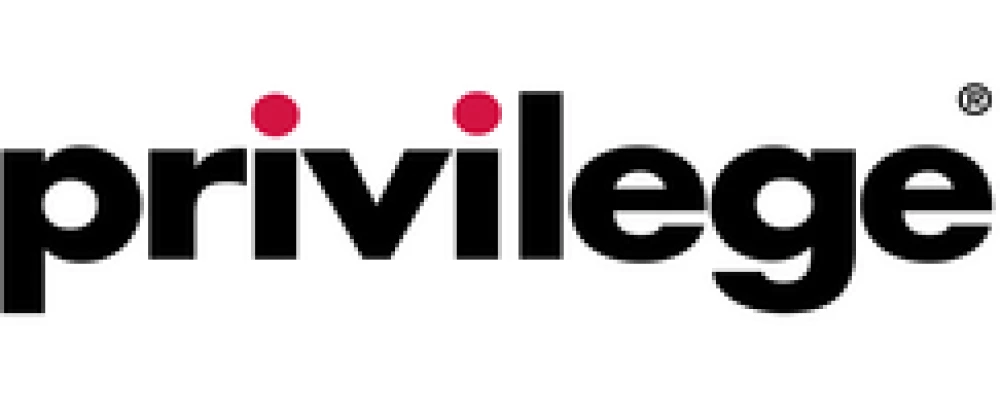Table of Contents
B2B segmentation is the process of dividing an organisation’s target audience into smaller groups – or segments – based on common characteristics.
What is the purpose of B2B customer segmentation?
As human beings, we are adept at creating stronger relationships, by tailoring the way we interact with others. We’ll adapt what we say and do – and even how we speak – to take account of the other person’s needs, expectations, and behaviours.
The purpose of a B2B customer segmentation is much the same. It enables the brand to adapt what it says and does, to reflect the characteristics of its priority segment(s) more closely.
The benefits of B2B customer segmentation
The right customer segmentation can be a game-changer for the whole business, leading to higher rates of acquisition, retention, and customer satisfaction.
Individual benefits may include:
- More meaningful customer engagements. This, in turn, can have a positive impact on profitability as, according to NerdWallet, 80% of B2B customers are prepared to pay more for a better customer experience.
- Shorter customer conversion times.
- Increased rates of cross-sell and up-sell.
- Increased, positive word-of-mouth.
- More streamlined and successful new product development
- Increased customer loyalty and lifetime value. According to NerdWallet, customers spend 43% more on brands they are loyal to, whilst loyalty programme members spend 12-18% more than non-loyalty members.
In addition, marketing platform provider, Mailchimp, reviewed the success of segmented versus non-segmented campaigns involving 18 million email recipients. In the case of the segmented campaigns, it found that:
- Bounce rates were 4.6% lower.
- Open rates were 14.3% higher.
- Click-through rates were double those of the non-segmented campaigns.
- Unsubscribes were 9% lower.
The relevance of B2B customer segmentation strategy for smaller businesses
Many new businesses experience significant growth in the early years, often as the result of latent demand, entrepreneurial nous, gut feel, and often, a little good fortune.
However, even these businesses eventually reach the point where growth starts to flatten out, as newer market entrants with newer propositions begin to eat into their market share.
It is most often at this point when businesses are looking for better ways to both re-engage and expand their customer base, that customer segmentation research services are first considered.
Key factors to consider when developing a customer segmentation
The are several watchouts when developing a new segmentation. For example:
- Robustness: If the segmentation is to be created using survey-based data, the underlying sample needs to be large enough for that data to be robust. This is likely to require a data set based on several hundred completed surveys, as a minimum.
- Relevance: If the criteria used as the foundation for the segmentation model are based on customer needs or behaviours, they should be criteria that the business can target via its product, sales, marketing, and its channel presence. If not, the model is unlikely to have the capability to positively affect levels of acquisition, retention, or satisfaction.
- Attribution: It must be possible to ascribe all customers – both existing and new – to one of the segments. In the case of new customers, asking just a small number of so-called ‘golden questions’, identified from the original segmentation survey, is usually sufficient for this purpose. If not, the model is highly unlikely to be practical.
- Accessibility: the model needs to be easy enough for all customer-facing parts of the business to understand and derive value from it. Otherwise, some parts of the business end up adopting it, whilst others get left behind.
- Recency: the segmentation model should be updated on a ‘regular’ basis, meaning at least every two to four years, depending on the pace of the sector the brand operates in.
5 types of B2B segmentation
There are 5 main types of B2B segmentation model, and each is outlined below.
1. Firmographic segmentation
Think of firmographic segmentation as the B2B equivalent of a B2C demographic segmentation model.
It’s the most common form of B2B segmentation because it is based on data that is relatively accessible. Individual firmographics may include:
- SIC code
- Industry or sector
- Number of employees
- Number of locations
- Annual revenue or profit
- Growth trends and trajectory
On the other hand, firmographics often lacks the degree of insightfulness and usability required by organisations.
For this reason, firmographics tends to be combined with other, less ‘functional’ segmentation criteria, resulting in more powerful segmentation models.
2. Geographic segmentation
Often considered to be another form of firmographic segmentation, geographic segmentation clusters customers by location or region.
Whilst it is often regarded as a very basic segmentation it can still be highly effective for organisations with significant logistical challenges. For example, companies that run large, regional field forces, manage a network of regional depots, or are part of a complex supply chain.
3. Needs-based segmentation
Most commonly, this form of segmentation reflects customer needs that are rational, tangible, and product-related (e.g. relating to price, lead times and product specification).
However, it also has the potential to go further, by including ‘softer’, more emotionally oriented criteria, (e.g. relating to ethical product sourcing, company values and business culture).
Theoretically, a needs-based segmentation model which manages to encapsulate both rational and emotional needs is going to be the most powerful, due to its potential to target the conscious (rational) and sub-conscious (emotional) mind.
In reality, though, a significant communications budget is typically required for a strategy designed to target B2B customers’ emotional needs, and that type of spend tends to be more in keeping with B2C rather than B2B marketing.
4. Behaviour-based segmentation
A behavioural segmentation may combine different aspects of the customer behaviour, across the full relationship cycle, from investigation, through to purchase and product ownership. Individual, behavioural segmentation criteria may include channel usage, purchase frequency and how the product is ultimately being used.
The main benefit of this form of segmentation is that the underlying criteria tend to be highly visible, making them easy to target via communications or improvement initiatives.
5. Profitability-based segmentation
This is a simple form of segmentation whereby customers are alloted to different segments or tiers, based on their potential, lifetime value.
The organisations occupying the more profitable segments will then unsurprisingly be the focus of the organisation’s sales, marketing, and product strategies.
Figure 1: The B2B segmentation sweet spot

The differences between B2B versus B2C segmentation
B2B organisations often take the view that customer segmentation is a tool for B2C organisations only and point to the significant differences between the B2B and B2C purchase journeys, to justify that view.
For example, in B2B segmentation:
- Product or service costs tend to be much higher.
- Product or service failure can have far-reaching implications.
- Decision-making criteria are generally more rational than emotional.
- Several layers of decision-makers may be involved. For example, a 2021 Forrester report concluded that 63% of B2B purchase decisions involved 4 people or more. This was up from just 47% In 2017.
- The purchase journey may take months.
- On-going customer service and relationship management may be key.
- Personal relationships play a pivotal role.
Instead, these characteristics suggest that a B2B segmentation model that includes behavioural characteristics will often be very effective, as a means of dividing and targeting different customer groups.
The role of market research in B2B segmentation development
Market research is required in the development of segmentation models which include a human dimension – namely the needs – and behaviour-based approaches.
The research process typically starts with a phase of qualitative research, in the form of 1-2-1 interviews, conducted with decision-makers within target audience organisations. The role of this research is exploratory, to identify and dissect the needs, expectations and/or behaviours that are most significant in their dealings with the supplier organisation.
Quantitative research is then used to determine the relative importance of these individual issues and to identify the most salient measurement criteria to be used as the basis of segmentation development.
Conclusion
The right segmentation model is so powerful and so transformative that is may well represent the most significant marketing investment your organisations will ever make.
Whether you’re just getting started with B2B customer segmentation or looking to take your customer segmentation strategy to the next level, this article gives you everything you need to know.
We’ve covered the basics of what B2B segmentation is and why it’s so important. We’ve also explored the different types of B2B segmentation, and the challenges involved in creating a successful B2B marketing strategy.
Learn More
So, what are you waiting for? Get started today and see the benefits for yourself!
For more information on B2B customer segmentation, call Brandspeak on +44 (0) 203 858 0052 or at Enquiries@brandspeak.co.uk
B2B Segmentation FAQs
What is a basic B2B segmentation?
One of the most basic forms of B2B segmentation is firmographic segmentation, because it requires information that is generally available within the public domain and can be obtained at little cost.
What is the best form of B2B segmentation?
The most successful segmentation models typically reflect a combination of segmentation criteria, drawn from two or more of the approaches outlined above. Ideally, these criteria will include several need- and behaviour-based elements, because of their ability to shape advertising and communications, as well as customer relationship management.
What is the 5 main types of B2B segmentation?
The 5 most common types of B2B segmentation are firmographic, needs-based, behavioural, geographic, and profit-based.














